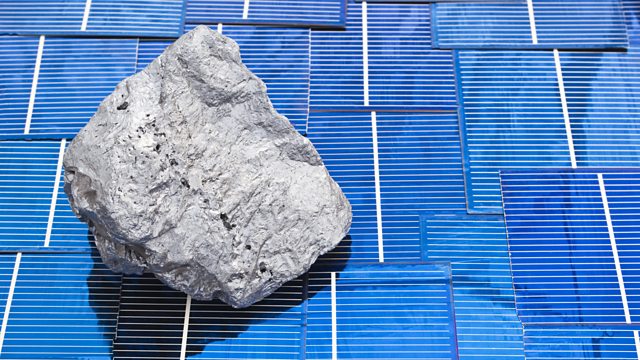Silicon - The World's Building Block
Silicon forms more than a quarter of the earth's crust by weight. With oxygen it makes sand and it is essential to electronics. Dr Louisa Preston explores why silicon is so useful
Silicon is literally everywhere in both the natural and built environment, from the dominance of silicate rocks in the earth crust, to ubiquitous sand in building materials and as the basis for glass.
We've also harnessed silicon's properties as a semiconductor to build the modern electronics industry - without silicon personal computers and smartphones would simply not exist.
Silicon is also found widely across the universe. It is formed in stars, particularly when they explode. And the similarities between how silicon and carbon form chemical bonds has led many to wonder whether there could be silicon based life elsewhere - perhaps in some far flung part of the galaxy where carbon is not as abundant as here on earth.
As well as discussing the potential for silicon based life on other planets, Birkbeck University astrobiologist Dr Louisa Preston considers the varied uses of silicon here on earth, from its dominance in our built environment to its driving role in artificial intelligence and its ability to harness the sun's energy.
Image: Lump of silicon on solar panels
Credit: wloven/Getty Images
Last on
More episodes
Broadcasts
- Mon 28 Aug 2017 19:32GMTΒι¶ΉΤΌΕΔ World Service except News Internet
- Tue 29 Aug 2017 02:32GMTΒι¶ΉΤΌΕΔ World Service Americas and the Caribbean
- Tue 29 Aug 2017 04:32GMTΒι¶ΉΤΌΕΔ World Service except Americas and the Caribbean, East and Southern Africa, News Internet & West and Central Africa
- Tue 29 Aug 2017 06:32GMTΒι¶ΉΤΌΕΔ World Service East and Southern Africa
- Tue 29 Aug 2017 13:32GMTΒι¶ΉΤΌΕΔ World Service Australasia
- Sun 3 Sep 2017 01:32GMTΒι¶ΉΤΌΕΔ World Service except News Internet
Space
The eclipses, spacecraft and astronauts changing our view of the Universe
The Curious Cases of Rutherford and Fry
Podcast
-
![]()
Discovery
Explorations in the world of science.



